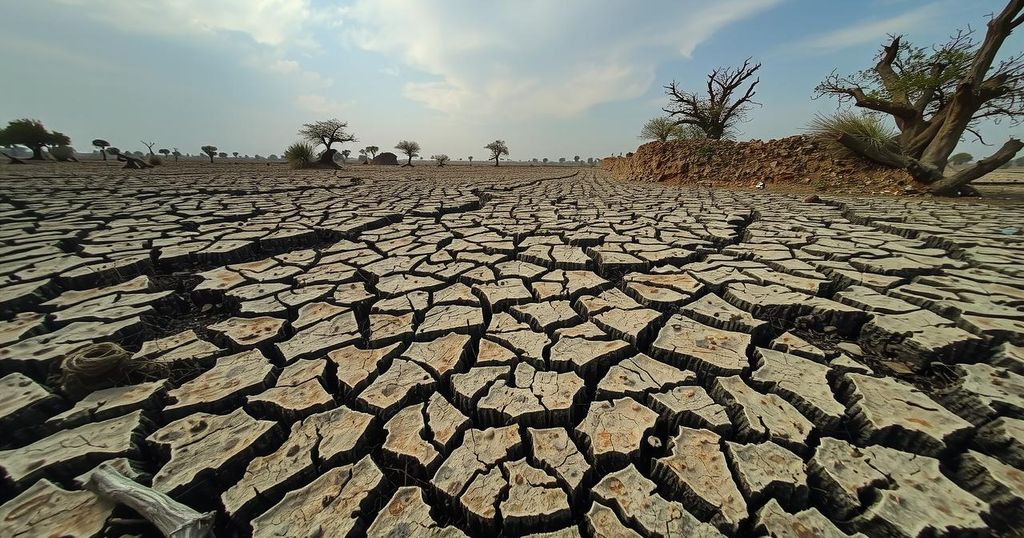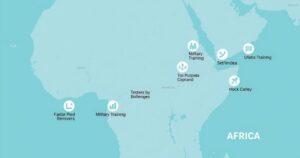Drought Strikes Southern Africa: Lake Kariba’s Falling Levels Threaten Hydropower

Lake Kariba is experiencing a severe drought, leading to its water levels nearing record lows, jeopardizing the Kariba Dam’s operations for the first time in 65 years. The situation has resulted in extensive power cuts in both Zambia and Zimbabwe, impacting their economies and livelihoods. The drought is attributed to the recent El Niño effects and highlights the need for diversified energy solutions to mitigate future challenges.
Lake Kariba, the largest human-made lake globally, is critically affected by an unprecedented drought, resulting in its water levels plummeting to near-record lows. This situation threatens the operations of the Kariba Dam, the chief power source for Zambia and Zimbabwe, which may be forced to cease operations for the first time in 65 years. The recent El Niño has prompted a devastating dry spell in southern Africa, causing both nations to implement severe water rationing and endure extensive power outages, severely impacting daily life and the economy. Currently, power shortages are rampant, with Zambia experiencing cuts of up to 21 hours daily and Zimbabwe facing 17-hour interruptions. The economic ramifications are dire, with Zambia grappling with the aftermath of a prolonged debt crisis and Zimbabwe suffering from overwhelming inflation. The rising temperatures attributed to climate change exacerbate the conditions, leading to adverse agricultural effects across the region. As noted by Cephas Museba, manager of Zambia’s hydropower plant, current conditions are the most severe he has seen throughout his career since 2005. The Kariba Dam itself was constructed between 1955 and 1959 during the colonial period. Historically significant, its completion led to the displacement of approximately 57,000 residents and brought wildlife rescue efforts through Operation Noah. The Zambezi River Authority allocates water from the dam equally between the two countries; however, the long-standing drought has compelled authorities to restrict water output. Consequently, only one of the six turbines at Zambia’s hydropower station operates, contributing to a precarious power supply. Additionally, the drought has devastated local agriculture, resulting in widespread hunger across southern Africa, prompting Lesotho, Malawi, Namibia, Zambia, and Zimbabwe to declare national disasters. Small businesses in Zimbabwe, such as that owned by Handsome Maurukira, are facing closures due to unreliable power. The economic forecasts for both countries reflect these challenges, with anticipated growth declines this year. Despite criticism of the state-run power utility, Zesco, for inadequate preparation, the need for diversified energy sources has become clear, leading to the development of coal and solar plants. Zambian officials stress the importance of energy security while acknowledging the need to transition towards renewable sources. As of mid-October, the water level at Lake Kariba is dangerously close to necessitating the plant’s shutdown, with the looming rainy season presenting a small glimmer of hope for recovery. Museba urges for timely rainfall as the region’s future hinges on this precarious situation.
The drought affecting Zambia and Zimbabwe is attributed primarily to the El Niño climate pattern, which has caused elevated temperatures and reduced rainfall, striking southern Africa hard. Lake Kariba is essential to both nations, providing the majority of their hydropower needs. The Kariba Dam, built in the late 1950s, has been pivotal for economic development in the region. However, ongoing climatic changes and insufficient rainfall have often led to low water levels, threatening the dam’s functionality. The current drought has drawn attention to the necessity of improved water management and diversification of energy sources to mitigate future risks.
The ongoing drought that has led to significantly low water levels in Lake Kariba poses a serious threat to the power supply and economies of Zambia and Zimbabwe. The historical context of the dam illuminates its significance, while the severe power cuts and agricultural devastation highlight the urgent need for diversified energy solutions. As regional stakeholders look toward the impending rainy season, the necessity for immediate action and sustainable resource management becomes increasingly evident to prevent future crises.
Original Source: www.theguardian.com







